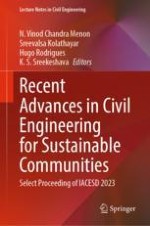2024 | OriginalPaper | Buchkapitel
Ensemble Machine Learning Models to Predict the Compressive Strength and Ultrasonic Pulse Velocity of Sustainable Concrete
verfasst von : Saad Shamim Ansari, Mohd Asif Ansari, Mohd Shariq, Fareed Mahdi, Syed Muhammad Ibrahim
Erschienen in: Recent Advances in Civil Engineering for Sustainable Communities
Verlag: Springer Nature Singapore
Aktivieren Sie unsere intelligente Suche, um passende Fachinhalte oder Patente zu finden.
Wählen Sie Textabschnitte aus um mit Künstlicher Intelligenz passenden Patente zu finden. powered by
Markieren Sie Textabschnitte, um KI-gestützt weitere passende Inhalte zu finden. powered by
